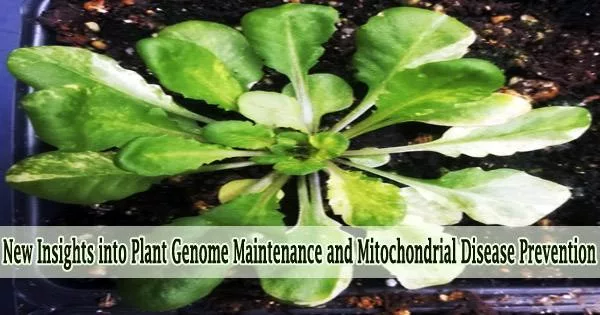Approximately 1 in every 4,300 people in the United States and millions of others worldwide suffer from mitochondrial disorders.
The mechanisms behind these disorders, which can cause neurological issues, poor growth, and other symptoms, are located in the genes of the mitochondria, the cellular organelles responsible for generating cellular energy.
Nuclear genomes, which we typically conceive of as being inherited equally from the mother and father, are distinct from mitochondrial genomes, which are transmitted exclusively from the mother.
The mutation rates in mitochondrial genomes are quite high in humans and other animals, and these changes are very easily transferred from mother to kid. In order to eradicate mitochondrial illness, scientists are keen to learn more about the causes of these high mutation rates and what can be done to halt them.
The National Institutes of Health are funding biologists at Colorado State University to investigate these issues, but they are plant biologists, not medical experts. In terms of genetics, it turns out that humans can learn a lot from plants about how to prevent disease-causing mutations in our mitochondrial genomes.
How do plants experience mitochondrial mutations?
In a recent study that was recently published in Proceedings of the National Academy of Sciences, Amanda Broz, a research scientist in the lab of Dan Sloan, an associate professor in the Department of Biology, shed new light on how plants occasionally experience mutations in their mitochondrial genomes.
Something that is really cool about our work is that it illustrates how nature has devised multiple ways of dealing with mutations in organelle genomes. We know that mitochondrial mutations are one of the key factors leading to aging and disease in humans. Knowing how plants and other organisms maintain such low mitochondrial mutation rates can give us a better understanding of how this process goes awry in humans, and potentially how it can be remedied.
Amanda Broz
Plants, unlike humans, can quickly correct these changes, and more importantly, they don’t pass them on to their offspring.
In earlier research, Sloan and his team proposed that mitochondrial and chloroplast DNA replication, recombination, and repair genes in plants may play a role in maintaining the health and absence of mutations in these organelles.
They focused on a gene known as MutS homolog 1, or MSH1, which is present in plants but not in people. They created lab-grown plants with mutations in this gene and discovered proof that this gene is essential for preventing mitochondrial mutation rates from rising in plants.
They then conducted a more thorough analysis in an effort to comprehend how mutations in the mitochondrial and chloroplast genomes spread both within and across generations of the plant.
They discovered and go into depth about this in their recent paper that plants are quite adept at distinguishing between normal (healthy) and mutant (diseased) DNA. Natural selection then takes over after the sorting process is complete; since offspring with defective DNA have a lower chance of surviving, the mutation is not passed on to offspring.
In contrast, because this ability to sort DNA is significantly less efficient in humans, sick DNA tends to mix in with healthy DNA and is passed down through generations. Technically speaking, plants eliminate heteroplasmy the presence of both mutant and non-mutant DNA in their cellular compartments much more quickly and effectively than do animals and people.
Using a delicate method called digital droplet PCR, the researchers followed the mitochondrial changes they discovered in the species Arabidopsis over time and space. Using this method, they were able to compare the proportion of mutant vs healthy mitochondrial DNA in these plants.
The CSU biologists discovered that functional copies of MSH1 are what speed that DNA sorting process in plant mitochondria using the mutant plants they generated in the lab.
They postulate that MSH1 is in charge of both finding and correcting mutations in mitochondrial DNA. MSH1 can, however, also function to quickly separate a mutation from normal DNA if it continues for some reason.
“Something that is really cool about our work is that it illustrates how nature has devised multiple ways of dealing with mutations in organelle genomes,” Broz said. “We know that mitochondrial mutations are one of the key factors leading to aging and disease in humans. Knowing how plants and other organisms maintain such low mitochondrial mutation rates can give us a better understanding of how this process goes awry in humans, and potentially how it can be remedied.”
More can be learned from the mutant plants by the researchers. The researchers are now developing a mathematical model to try to explain what cellular factors are in charge of the various speeds of organelle DNA sorting they observed in plants, as well as the function of MSH1.
Collaborators from the Norwegian University of Bergen are in charge of that portion of the project. Additionally, they want to know if MSH1 has the same effect on sorting mitochondrial DNA in other plant species outside Arabidopsis, like trees with completely distinct growth patterns.





